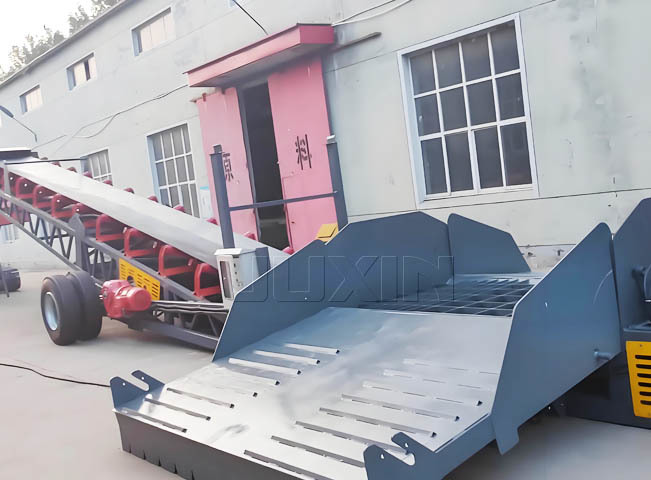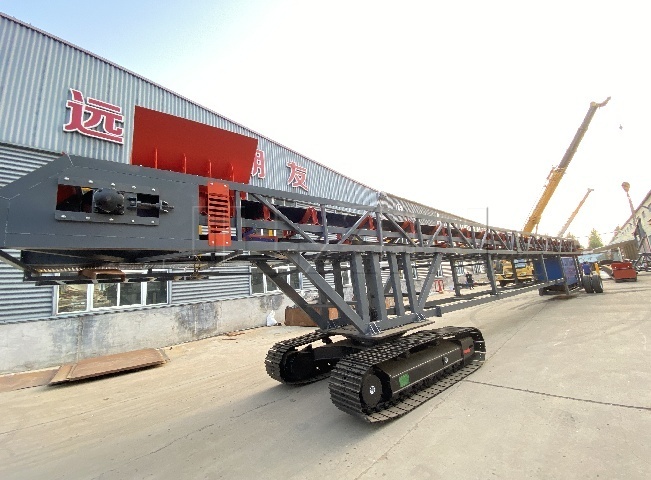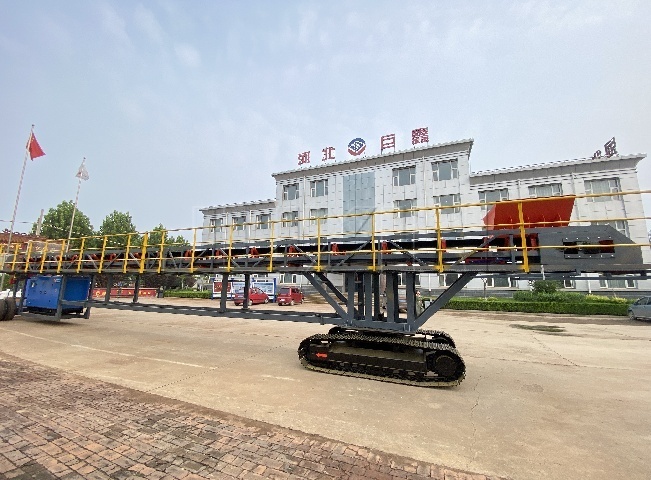PRODUCTS
Categories
Hot Products
Conveyor Belt Covers
Leave a request and we will contact you within 10 minutes!
PRODUCT INTRODUCTION
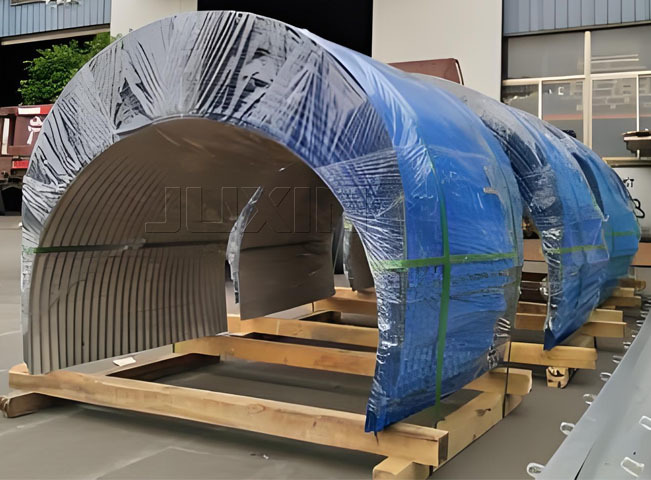 Conveyor belt covers are protective structures used to shield conveyor belts from environmental factors, enhance safety, and improve operational efficiency. Belt Conveyor Cover Shields belts from environmental damage, reducing maintenance costs. Conveyor rain-proof cover Prevents accidents and injuries by covering moving parts. Conveyor dust proof cover Maintains consistent conveyor operation by preventing material loss or contamination. Conveyor rain cover Helps meet regulatory standards for workplace safety and environmental protection.
Conveyor belt covers are protective structures used to shield conveyor belts from environmental factors, enhance safety, and improve operational efficiency. Belt Conveyor Cover Shields belts from environmental damage, reducing maintenance costs. Conveyor rain-proof cover Prevents accidents and injuries by covering moving parts. Conveyor dust proof cover Maintains consistent conveyor operation by preventing material loss or contamination. Conveyor rain cover Helps meet regulatory standards for workplace safety and environmental protection.
WHERE IS IT USED
Mining: Protects belts from debris, dust, and harsh weather.
Agriculture: Keeps grains and other materials dry and clean.
Manufacturing: Ensures smooth operation and safety in production lines.
Logistics: Protects goods during transportation on conveyor systems.
PRODUCT DESIGN
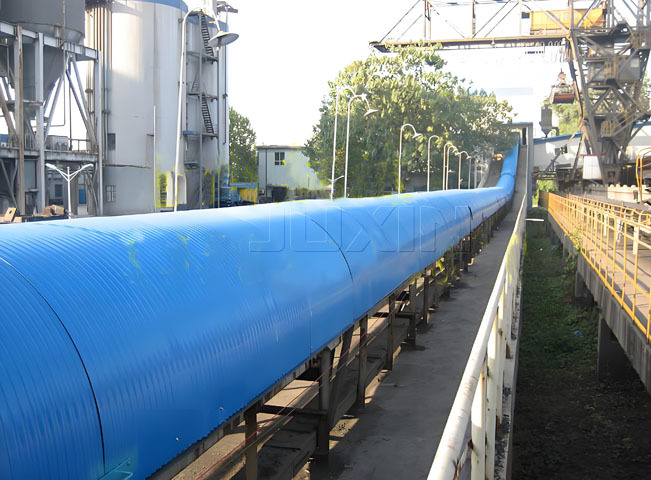
The design of a conveyor rain-proof cover is critical to ensure effective protection against rain, moisture, and other environmental factors while maintaining the conveyor's functionality.Key Design Considerations
1. Material Selection:
Use weather-resistant materials such as galvanized steel, aluminum, or UV-stabilized polyethylene (PE).
Ensure the material is durable, corrosion-resistant, and capable of withstanding harsh weather conditions.
2. Shape and Structure:
A-Frame or Arch Design: Commonly used to allow rainwater to slide off easily.
Flat or Sloped Roof Design: Ensures water drainage and prevents pooling.
The design should accommodate the conveyor's height, width, and load capacity.
3. Coverage Area:
The cover should fully enclose the conveyor belt and its components to prevent water ingress.
Include overlapping sections or seals to ensure no gaps are left exposed.
4. Ventilation:
Incorporate ventilation features to prevent condensation buildup inside the cover.
Use mesh panels or vents to allow airflow while keeping rain out.
5. Accessibility:
Design access points (e.g., doors, removable panels) for maintenance and inspection.
Ensure these access points are also rain-proof when closed.
6. Load Capacity:
Account for the weight of the cover itself, as well as potential snow or wind loads.
Ensure the structure can withstand additional stresses without compromising the conveyor's operation.
7. Ease of Installation:
Use modular designs for easy assembly and disassembly.
Prefabricated sections can reduce installation time and costs.
THE CONVEYOR BELT HAS THE FOLLOWING DESIGN
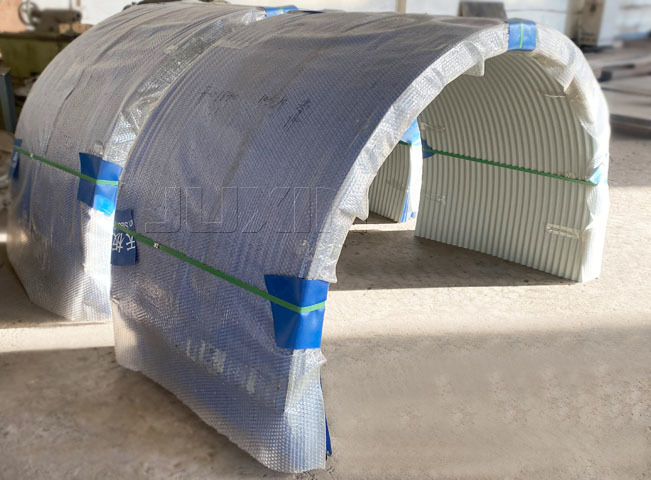 A conveyor rain-proof cover, also known as a conveyor belt cover or canopy, typically consists of several key structural components, mainly including the covering material layer, supporting structure, connection and fixation components, and some additional functional components. The specific introduction is as follows:
A conveyor rain-proof cover, also known as a conveyor belt cover or canopy, typically consists of several key structural components, mainly including the covering material layer, supporting structure, connection and fixation components, and some additional functional components. The specific introduction is as follows:
1 Covering Material Layer
1)Plastic Films: Commonly used materials like polyethylene (PE) and polyvinyl chloride (PVC) films are lightweight, have good waterproof properties, and are cost-effective. PE films are known for their flexibility and durability, while PVC films offer better resistance to sunlight and chemicals. They are suitable for general-purpose conveyor rain-proof covers where the requirements for strength and long-term use are not extremely high.
2)Fiberglass Reinforced Plastics (FRP): FRP combines the high strength of glass fibers with the corrosion resistance and weatherability of resins. It has excellent waterproof performance, high strength, and good heat resistance. FRP rain-proof covers are often used in harsh environments or where higher strength and durability are required, such as in industrial production lines exposed to the outdoors for a long time.
3)Canvas Coated with Waterproof Materials: Canvas itself has a certain strength and toughness. When coated with waterproof materials like polyurethane or silicone, it becomes waterproof and mold-resistant. This type of material is relatively flexible, easy to install and maintain, and can be customized in different sizes and shapes to adapt to various conveyor belt widths and lengths.
2 Supporting Structure
1)Steel Frame: Made of steel pipes or steel profiles, steel frames have high strength and stability. They can bear the weight of the rain-proof cover and withstand external forces such as wind and snow. Steel frames are usually welded or bolted together to form a stable framework structure. They are suitable for large-scale conveyor systems that require strong support.
2)Aluminum Alloy Frame: Aluminum alloy frames are lightweight yet have good strength and corrosion resistance. They are easier to install and handle than steel frames and are often used in conveyor systems where weight is a concern, such as in some food processing or light industry production lines.
3)Plastic Frame: Some plastic materials, such as reinforced polypropylene (PP) or polycarbonate (PC), can be used to make frames. Plastic frames are lightweight, corrosion-resistant, and have good insulation properties. They are suitable for conveyor systems in environments with special requirements, such as in clean rooms or areas where electrical insulation is needed.
3 Connection and Fixation Components
1)Bolts and Nuts: Commonly used to connect the covering material to the supporting frame and to fix different parts of the frame together. They provide a reliable and stable connection and are easy to install and disassemble for maintenance and replacement.
2)Clamps and Fasteners: Clamps are used to secure the edges of the rain-proof cover to the conveyor structure or the supporting frame. They can be made of metal or plastic and come in various shapes and sizes to fit different connection needs. Fasteners like snap buttons or zippers can also be used in some cases to provide a more flexible and convenient connection.
3)Adhesives and Sealants: In addition to mechanical connection methods, adhesives and sealants are often used to enhance the waterproof performance and connection strength. They are used to seal the joints and seams of the covering material and the supporting frame to prevent water from penetrating.
TABLE OF TECHNICAL CHARACTERISTICS
FEATURES AND BENEFITS
1. Three Decades of Expertise
Established in 1994, we bring 30+ years of specialized experience in bulk material handling equipment manufacturing and system integration, ensuring deep industry insights and technical mastery.
2. Robust China-Based Supply Chain
Leverage our vertically integrated supply network with long-term partnerships with certified Chinese steel mills, foundries, and component suppliers, guaranteeing cost efficiency, quality consistency, and on-time delivery.
3. Financial Strength & Flexible Terms
Backed by solid financial reserves, we offer tailored payment solutions for cyclical procurement (e.g., staggered payments, L/C flexibility) to optimize clients’ cash flow management.
4. Risk-Mitigated Operations
Proactive risk control frameworks minimize contractual, quality, and delivery risks: ISO 9001-certified quality assurance protocols Dual-source procurement strategies for critical components Escrow-backed performance guarantees
5. End-to-End Customization
Deliver turnkey solutions spanning design, fabrication, automation integration, and lifecycle support, tailored to site-specific requirements (e.g., extreme climates, hazardous zones).
6. After-Sales Excellence
24/7 multilingual technical support and a global spare parts network ensure <12-hour response times for critical breakdowns.
INSTALLATION AND COMMISSIONING FROM PROFESSIONALS
JUXIN also provides services for the installation and commissioning of conveyor equipment. Our team of experienced specialists will efficiently set up the operation of the conveyor line at your enterprise in a timely manner. We also offer installation supervision, where our specialist will visit your facility after equipment delivery to oversee the installation and launch process carried out by your personnel.
PRE-SALES:EQUIPMENT SELECTION
Assisting customers in selecting the most suitable belt conveyor for their specific needs and requirements. Additionally, we offer technical advice and guidance to facilitate informed decision-making on bulk material handling equipment. Furthermore, we can provide the following information:
• Customized solutions and design services
• Delivery lead time
• Equipment operation and maintenance
• Environmental and safety measures
• Integration with existing equipment

AFTER-SALES: 24/7 HOTLINE SUPPORT
We have established a hotline (+86 18622502901) to promptly address customer inquiries, feedback, and complaints. Our support is available 24 hours a day, seven days a week. Generally, our engineers will work remotely to resolve your issues.
- We provide training for customers on effective and safe operation and maintenance of the belt conveyor.
- We offer technical support and troubleshooting assistance to address any operational issues or concerns with the belt conveyor.
- We supply spare parts and components as needed, ensuring prompt delivery and compatibility with the specific belt conveyor model.
FILL OUT THE QUESTIONNAIRE
Have you filled out the questionnaire?
You need to fill out the questionnaire and send it to our mailbox
Our experts will calculate the mobile belt conveyor and provide the price.
Questionnaire download
If you encounter any problems while filling out the questionnaire, you can call us:
PHOTO GALLERY
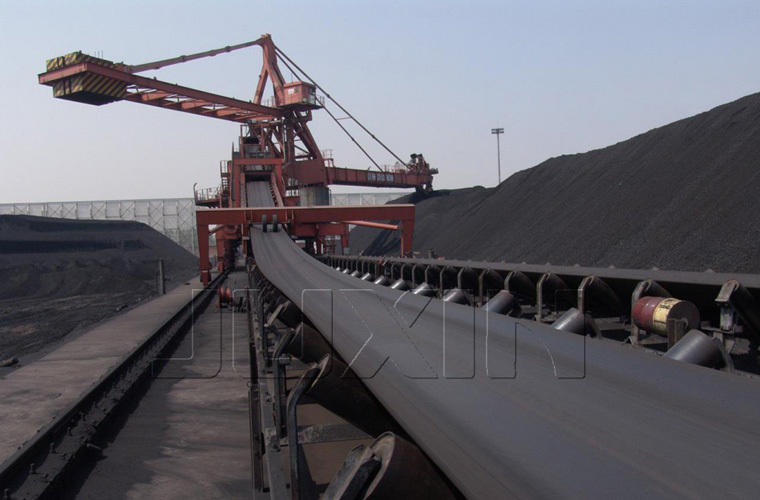
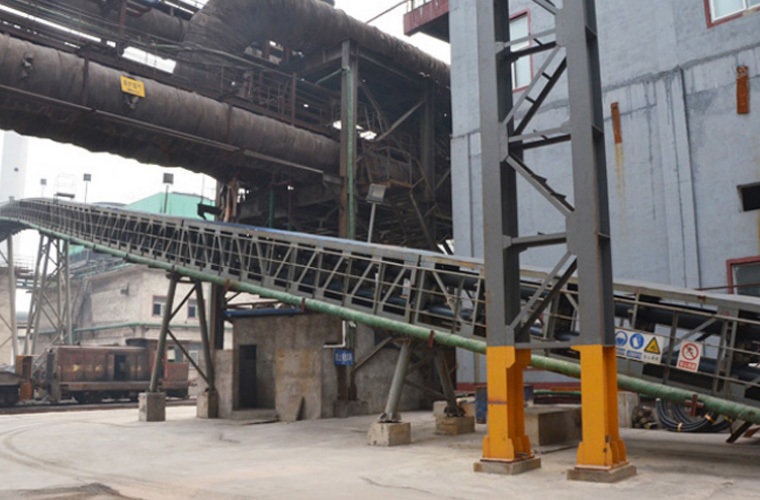
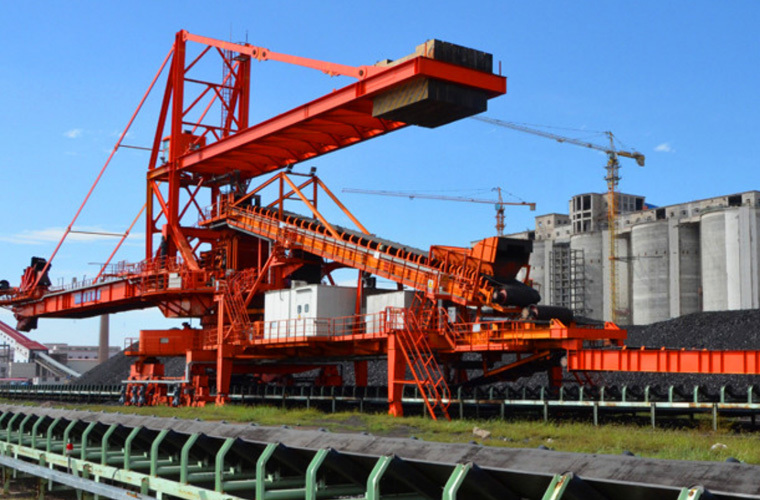
Previous:
Next:
Online inquiry


